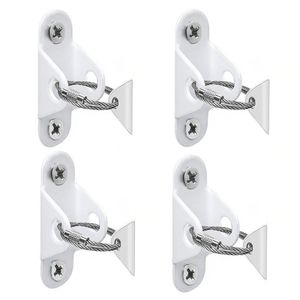Industrial Pull Handles: The Unsung Heroes of Efficiency and Safety

While often overlooked, industrial pull handles play a crucial role in various industrial and manufacturing settings. These seemingly simple components contribute significantly to workplace efficiency, safety, and ergonomics.
Let’s delve into the world of industrial pull handles, exploring their types, applications, and selection factors.
Types of Industrial Pull Handles:
The diverse needs of industrial environments necessitate a variety of pull handle designs, each offering unique advantages:
- Bar Pull Handles: Simple and versatile, these linear handles are suitable for various applications, offering a comfortable grip.
- D-Pull Handles: Featuring a D-shaped loop, these handles provide excellent leverage for opening heavy doors or cabinets, even when wearing gloves.
- T-Pull Handles: Similar to D-pulls, T-handles offer a three-pronged grip, allowing for easy opening from multiple angles.
- U-Pull Handles: These recessed handles are ideal for applications where space is limited or a flush profile is desired.
- L-Pull Handles: Offering a 90-degree bend, L-handles provide leverage for both pulling and pushing motions.
Applications of Industrial Pull Handles:
Industrial pull handles find application in a wide range of settings, including:
- Machinery and equipment: Opening control panels, access doors, and drawers on machinery and equipment.
- Storage cabinets and lockers: Enabling easy access to tools, materials, and personal belongings.
- Electrical panels and enclosures: Providing safe and efficient access to electrical components for maintenance or repairs.
- Emergency exits and safety doors: Ensuring quick and unobstructed egress in case of emergencies.
- Industrial vehicles and transportation: Opening doors and compartments on trucks, forklifts, and other industrial vehicles.
Choosing the Right Industrial Pull Handle:
Selecting the appropriate pull handle for your specific application requires careful consideration of several factors:
- Material: Choose durable materials like stainless steel, aluminum, or nylon, considering factors like corrosion resistance, strength, and weight.
- Size and Grip: Ensure the handle is large enough for a comfortable and secure grip, even when wearing gloves.
- Functionality: Consider the pulling force required and the intended direction of pull (horizontal, vertical, or angled).
- Mounting: Select a handle with a suitable mounting type (bolted, welded, or adhesive) based on the application and surface material.
- Safety: Opt for handles that comply with relevant safety standards, especially for use on emergency exits or in hazardous environments.
Beyond Functionality: The Added Value of Industrial Pull Handles
Industrial pull handles offer more than just functionality. They can also contribute to:
- Improved Ergonomics: Properly designed handles reduce strain on muscles and joints, preventing work-related injuries.
- Enhanced Aesthetics: Stylish and well-designed handles can contribute to a professional and organized work environment.
- Ease of Cleaning and Maintenance: Smooth and non-porous materials like stainless steel facilitate easy cleaning and disinfection.
Conclusion:
Industrial pull handles, though seemingly simple, play a vital role in ensuring efficient workflow, safety, and ergonomics in industrial settings. By understanding the different types, applications, and selection factors, you can choose the right handles to optimize your workplace and empower your workforce. Remember, these unsung heroes deserve recognition for their contribution to a smooth-running and safe industrial environment.




